Who would have thought that simple pickled vegetables could get much, much better? How do you do that? The answer is to give them a quick roast in a wok before pickling. This simple yet effective technique is my latest culinary discovery. As a result, pickled vegetables in this recipe come out better textured and more flavorful. My family loves these pickled veggies and enjoys them as a quick snack. I love them with meat dishes, potato dishes, and even on burgers. They are very tasty and versatile.
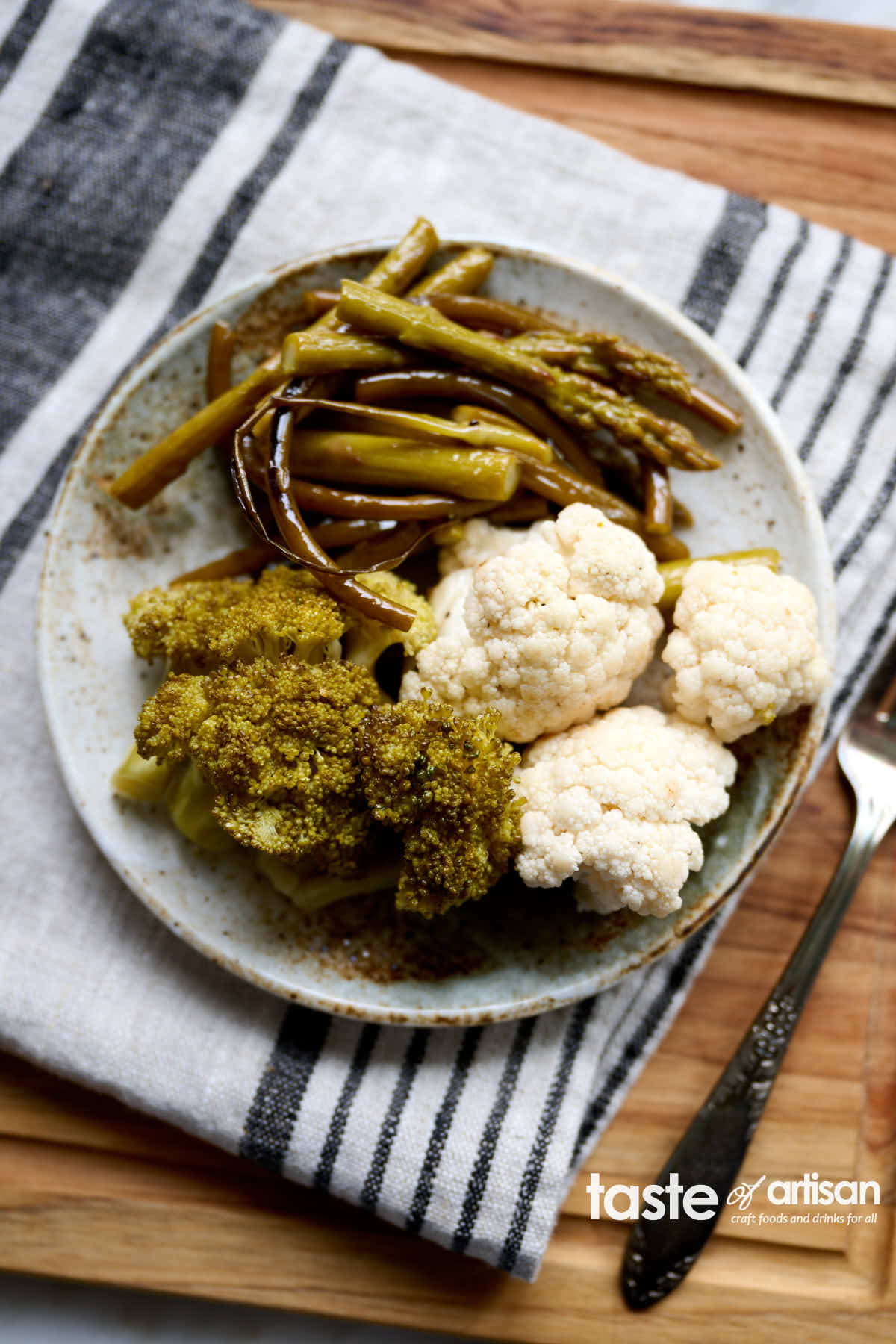
Why roast vegetables before pickling?
One of my favorite dishes is roasted vegetables with noodles and beef. I roast them briefly in a wok over high heat to soften them slightly and impart a roasty flavor. They retain most of their crunch but lose toughness and/or stringiness. This is especially true with asparagus, garlic scapes, broccoli, and some other vegetables.
When I made a batch of pickled asparagus, I immediately noticed that some, especially the thicker spears, were a bit too tough and stringy. They are not fun to eat. So, I decided to devise a solution for that. The first thing that came to mind was to roast them briefly, and it worked wonderfully. The resulting texture of the picked asparagus was softer and very pleasant to eat, but still crunchy.
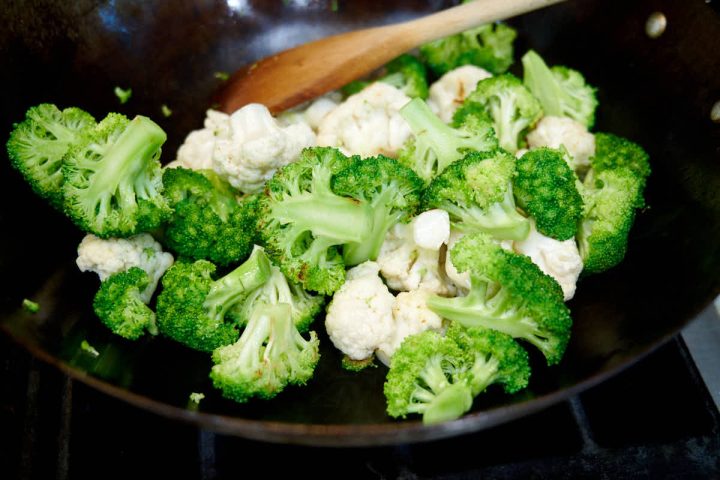

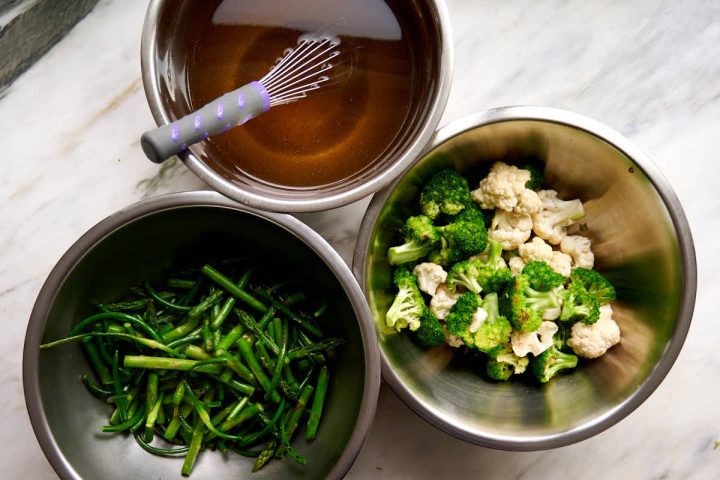
I tried this technique with many other vegetables and was pleasantly surprised at how much a quick roast improved them. This worked really well with beets, cauliflower, broccoli, peppers, cabbage, and especially garlic scapes. Garlic scapes, especially if picked a few days too late, can get tough. A quick roast softens them and imparts a nice, roasty flavor. But they all retained a fairly good amount of crunch. Needless to say, this is now my favorite recipe for making pickled vegetables.
What vegetables work with this recipe?
Broccoli, cauliflower, peppers, cabbage, and especially asparagus and garlic scapes benefit greatly from a quick roast before pickling. I've also tried this with garlic with great results. I recommend pickling garlic separately, though, as it may impart a strong garlic flavor to other veggies.
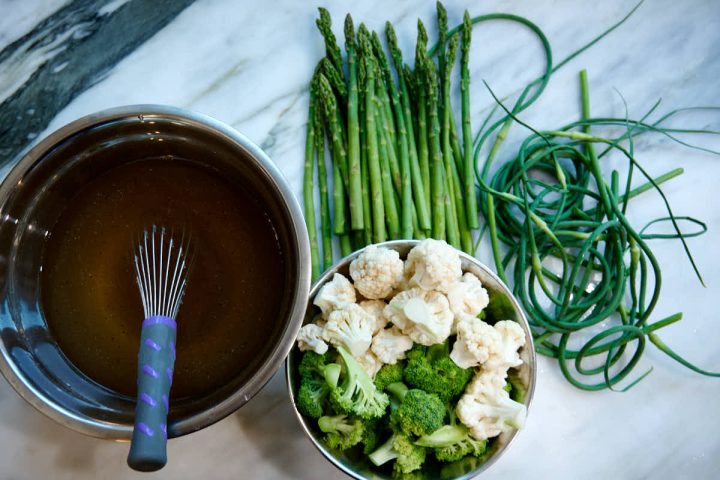
Onions are a definite no when it comes to roasting before pickling. I like my pickled onions made with fresh onions. The same is true for turnips and radishes. However, beets can be roasted before pickling without any problem. I actually prefer my beets slightly roasted as their texture and flavor improve.
Making pickled vegetables
The process is ridiculously simple. Pick the vegetables you want to pickle. Cut them into bite-sized pieces and roast in a little olive oil in a large wok. I use a cast-iron wok. Transfer them into a 1-Qt pickling jar. The size of the jar will depend on the size of the batch; however, the recipe I have written below yields 1-quart of pickled vegetables. Prepare a simple pickling brine by combining vinegar, salt, sugar, and black pepper. Top up the jar with the brine, making sure that all vegetables are submerged. This is it.
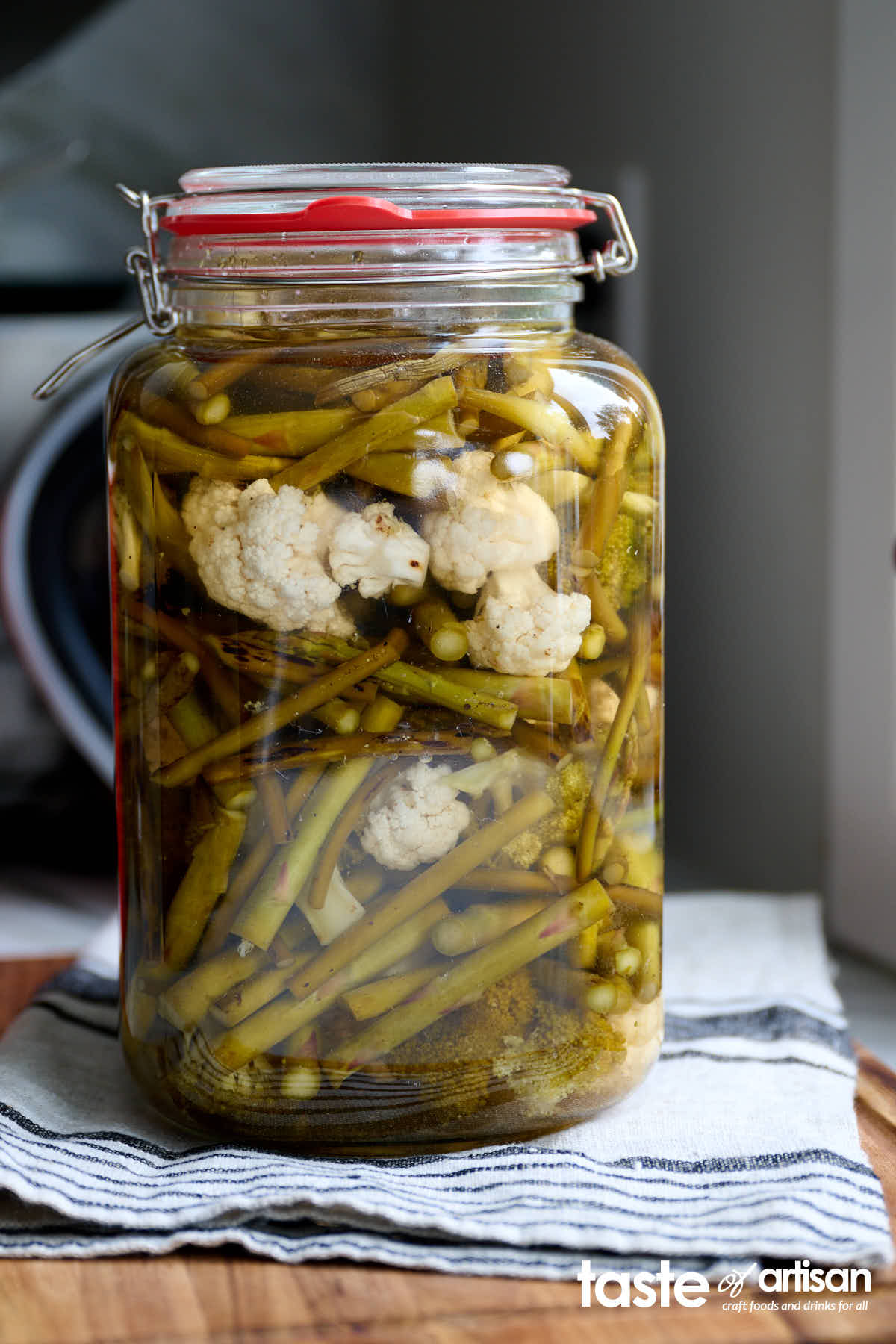
This is the brine from my favorite Pickled Red Onion recipe. I don't think it needs anything else. The simple ingredients go a long way. That said, you can always take it a step further and add some of your favorite spices or herbs. Dried or fresh. Use whatever you like, but be gentle with them so as not to overpower the vegetables.
How long before these pickled vegetables are ready to eat?
This is another great aspect of this recipe - the vegetables are ready just a few hours after pickling. Make this recipe at night, and the vegetables will be ready to enjoy the next morning. I think roasting helps in a big way. During roasting, vegetables lose some of the water contained in their cells. Once you put them in the pickling brine, they reabsorb the lost liquid. This makes them taste great after only a few hours.
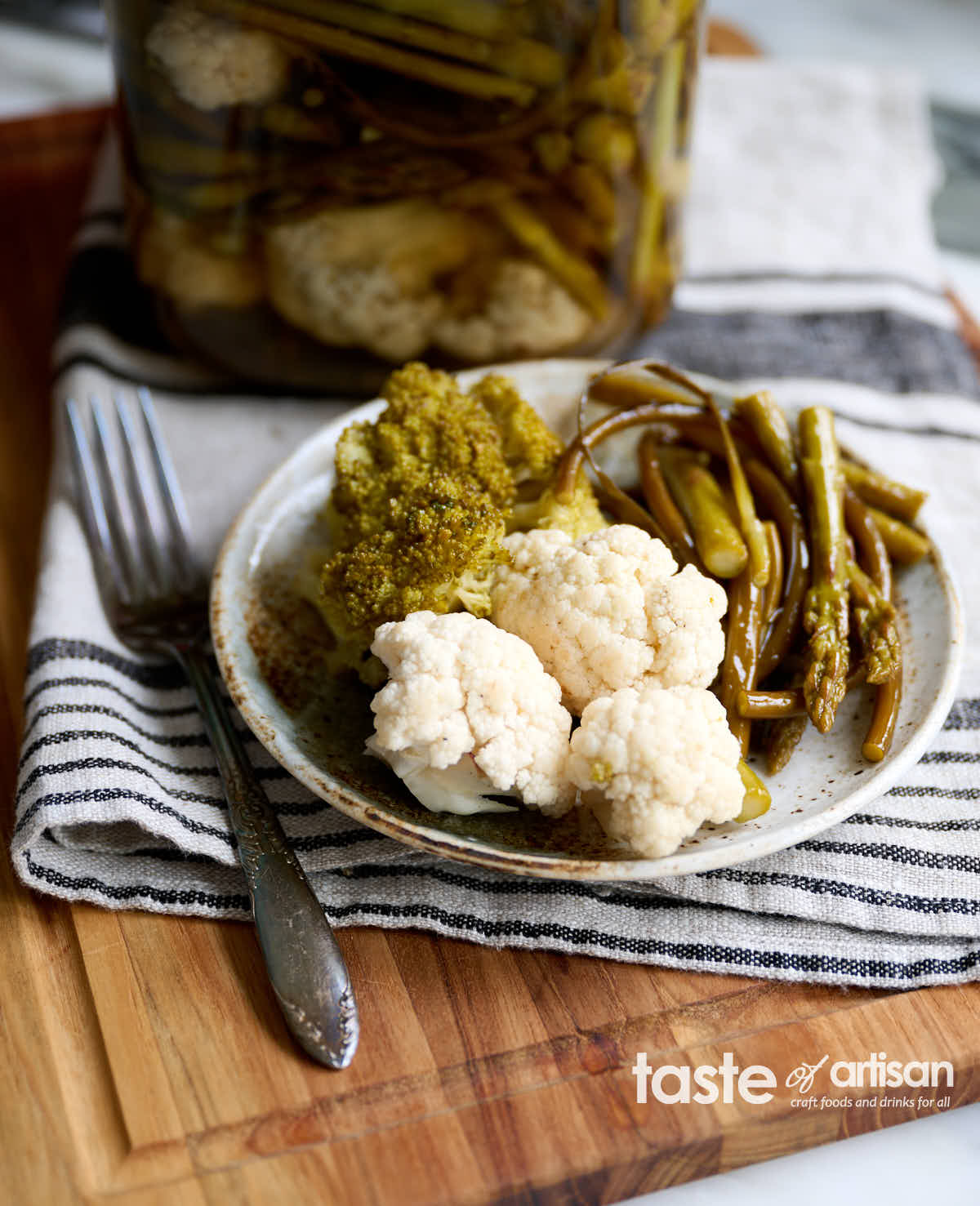
Storage
I make them in the evening and let them sit at room temperature overnight. They are ready to eat the next morning. In the morning, I transfer them to the fridge, where they can last for up to a month, or even longer. Always use a clean utensil to pick them from the jar, and they will last for quite a while.
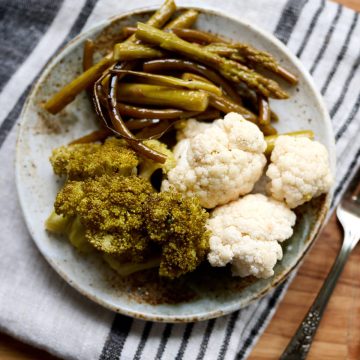
Next Level Pickled Vegetables
Ingredients
- 4 cups mixed vegetables e.g. broccoli, cauliflower, asparagus, garlic scapes, peppers, etc.
- 2 cups white vinegar
- 3 Tbsp white sugar
- 2 Tbsp kosher salt
- 1 tsp black pepper ground
- Olive oil for roasting vegetables
Instructions
- Cut the vegetables into bite-sized pieces, wash and dry well.
- Heat a tablespoon of olive oil in a large wok over medium-high heat. Add the vegetables and roast them for about 2-3 minutes, stirring frequently.
- Remove the vegetables from the heat, transfer to a clean 1-Qt glass jar, and close with a lid.
- Pour the vinegar in a medium bowl. Add the salt, pepper and the sugar and whisk until the salt and the sugar are dissolved. Pour the vinegar in the jar to the top. Discard any leftovers.
- Cover and let stand at room temperature for 4-6 hours or overnight, then refrigerate for up to 4 weeks. These pickled vegetables are ready for consumption after only a few hours but only get better over time.
Special Equipment
- One 1-qt glass jar with a lid You may use a larger jar for a larger batch of pickled vegetables


Leave a Reply